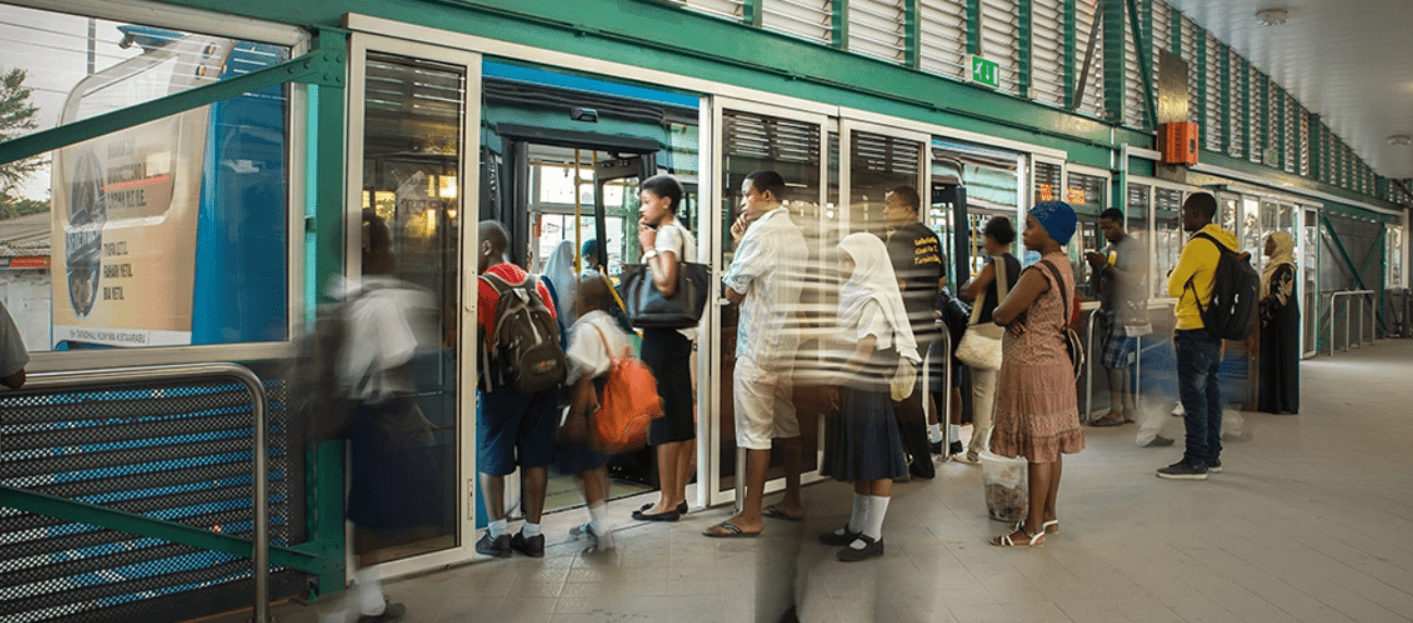There’s a prevailing belief that well thought out improvements to infrastructure services should improve the lives of women and girls. Providing better water and sanitation services, for example, can reduce the time women and girls spend fetching water, freeing their time for educational or economic pursuits.
However, this isn’t always the case: infrastructure affects men and women differently and research shows there’s often unequal access to, and control over, infrastructure facilities by men and women in many countries.
In transport, it’s well documented that women have more complex mobility patterns than men due to their gender roles (for example, taking care of children). As a result, they often try to juggle trips between other daily tasks and disproportionately shoulder the opportunity costs related to poor and unreliable transport systems. If faced with unreliable transport options, a woman may choose not to take a job further away because her schedule wouldn’t allow it—and one in six women avoid seeking jobs altogether out of fear of harassment in transit.
On top of that, social power structures, norms, and a country’s legal and regulatory environment can impact women’s and men’s abilities to equally benefit from infrastructure services.
The process of challenging power structures and changing norms isn’t easy, though many openings exist throughout the infrastructure project-development process to do so. Ensuring the equitable presence of both male and female voices when deciding which infrastructure to build or what technical solution to choose helps ensure better results for end users. In fact, there’s increasing recognition by private-sector infrastructure operators to cater more to women as users, improve the gender balance of their boards, source materials and services from more women-owned companies, and increase the number of women in the workforce.
Understanding the needs of all users and designing an infrastructure project to fully meet those needs will optimize the use of assets and maximize revenue, thereby optimizing the financial viability of the project, achieving better outcomes for all users, and increasing the chances for mobilizing private capital investment.
Introducing the PPP Gender Toolkit
To get a better grasp on these issues and how they’re translated into public-private partnership (PPP) projects, the Global Infrastructure Facility (GIF) and Public Private Infrastructure Advisory Facility (PPIAF) created a PPP Gender toolkit. But it’s not the kind of toolkit meant to read from beginning to end—ultimately it will be a live, web-based version where you can find the step you’re at and work from there plus the latest sectorial materials realized in the market.
The PPP Gender Toolkit’s purpose is to help governments and upstream advisors, PPP practitioners, multilateral development banks (MDBs), and private sector stakeholders mainstream gender considerations in infrastructure PPPs such as design features, measures, and specific actions to reduce gender inequalities (or closing gender gaps) within the community that the project affects directly or indirectly. It focuses on providing a practical, systematic way for stakeholders to make PPPs gender responsive at the different stages of the project cycle, building upon existing useful resources; and to help governments wishing to incorporate gender considerations in their PPP frameworks to do so.
For instance, the toolkit addresses accounting for gender considerations in the transport sector by drafting a gender action plan, ensuring first and last mile connectivity is safe for women and girls, providing adequate off-peak hour public transport service options, and adding features to ensure women’s safety such as adequate lighting at public transport stops, installing “help” buttons, and conducting gender-based violence training for drivers.
We recently launched the toolkit at the 68th annual Commission on the Status of Women (CSW68), the UN’s largest annual gathering on gender equality and women’s empowerment, and discussed what needs to be changed in the PPP industry to allow for the mainstreaming of gender in infrastructure and cited real-world examples of gender-responsive PPPs—you can rewatch the event here.
What’s the origin of the toolkit?
In 2019, the World Bank developed a primer as a first step to address gaps between men and women in infrastructure PPPs—in employment and entrepreneurship but also in other areas like safety, mobility, and control over resources.
To better understand such issues and how they’re translated into PPP projects, the GIF and PPIAF produced a gap analysis and literature review related to the integration of gender into infrastructure, which later served as a basis for the development of a Preliminary Findings Report on Gender Inclusive Approaches in Private Participation in Infrastructure in 2022—a unique investigation into how private investors and lenders perceive gender inequality and inclusion of women and girls in infrastructure services and facilities in emerging markets and developing economies (EMDEs), and its importance for their investments.
After a successful and well-received showcase of the preliminary findings report during the G20 Infrastructure Working Group Meeting under Indonesia’s Presidency, PPIAF and the GIF decided to take a step further to advance and operationalize the recommendations and lessons learned identified in the report by developing a toolkit to include gender gaps at every stage of the infrastructure PPP lifecycle.
Advancing the PPP gender agenda together
Gender-responsive PPPs are needed if we truly want projects to meet the demand and increase usership, and therefore revenues. A well-developed PPP that takes into consideration existing gender gaps, can not only close these gaps but generate positive impacts for women.
The toolkit is a start in the PPP market, it provides a framework for people to think of gender and the steps to take to incorporate gender. But this agenda will only advance if everyone in the market moves it forward together and invests in it—including the public and private sectors, academia, MDBs, and civil society.
This is where you come in: we invite you to join forces by providing evidence, case studies, comments, examples, and suggestions of how to deal with different parts of the PPP project cycle to incorporate gender in the transport, energy, water, and digital sectors. Please provide your input here—we’ll be collecting responses through May 31, 2024.
Source:https://blogs.worldbank.org/


